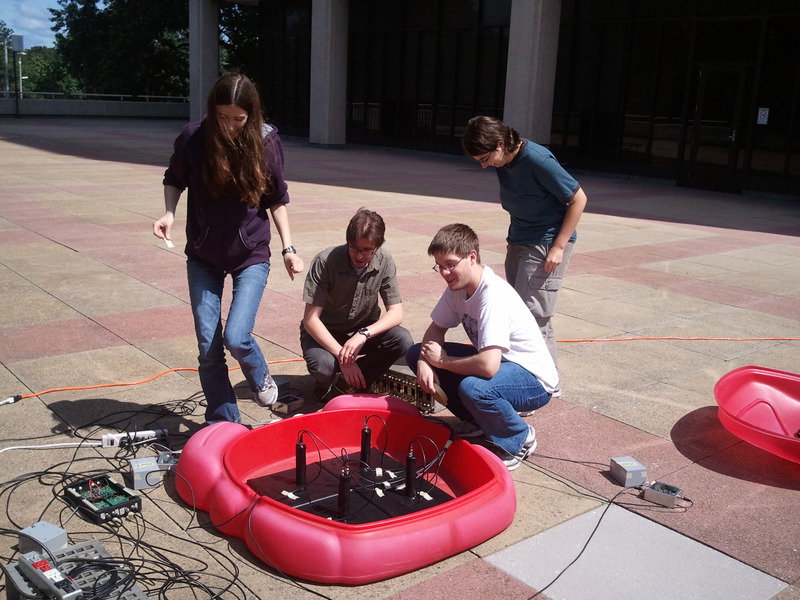The Auger and TOTEM collaborations directly support a wide range of activities that have a broader impact, beyond the scientific advances achieved in high energy astrophysics and particle physics. Each collaboration includes scientists serving as education and outreach coordinators to support a range of outreach activities on behalf of the collaboration, including web sites, visitor centers, and other materials for the public.
Additionally, the following education and outreach activities are specific to the Case Western group:
Undergraduate Research Opportunities
 During the past nine years, the HEA group has involved more undergraduates in physics research than any other single physics group at Case Western Reserve. At any given time, we support four or five undergraduates, ranging from first to fourth year. Our group has supported twelve different senior (thesis) projects in nine years, and the majority of students who work with our group go on to graduate schools in physics.
During the past nine years, the HEA group has involved more undergraduates in physics research than any other single physics group at Case Western Reserve. At any given time, we support four or five undergraduates, ranging from first to fourth year. Our group has supported twelve different senior (thesis) projects in nine years, and the majority of students who work with our group go on to graduate schools in physics.
In addition to involving undergraduate students from CWRU, the HEA group has recently provided opportunities for summer undergraduate research to students from other universities through the Research Experience for Undergraduates program. The REU program is a 10 week summer program funded in part by the National Science Foundation with additional support from CWRU in which each participant works on an undergraduate research project and is mentored by a physics faculty member. At the end of the program, participants share the results of their research in poster and presentation symposia.
Wireless Classroom Response System
The PI, Corbin Covault, has been a pioneer in the implementation of wireless classroom response systems (‘clickers’) for introductory college physics courses and continues to develop a comprehensive set of clicker questions that are available for any instructor.
K-12 Activities
The PI’s efforts range from participation in the public schools to direct work with middle-school and high school science teachers. The PI, Corbin Covault, has also served on advisory panels for high school physics education. Additionally, he has worked with the Auger Outreach and Education task leader (G. Snow) on several areas including the installation of a new public monitor/workstation running a Virtual Auger Visitor Center at Case Western that includes a special version of Google Earth featuring a “fly-through” tour of the Auger Observatory and a skymap (developed by S. Coutu at Penn State) showing the arrival directions of individual high energy cosmic rays. The Visitor Center has recently been expanded to provide interactive multimedia content on many topics in physics and information for students on careers in physics from the American Physical Society.